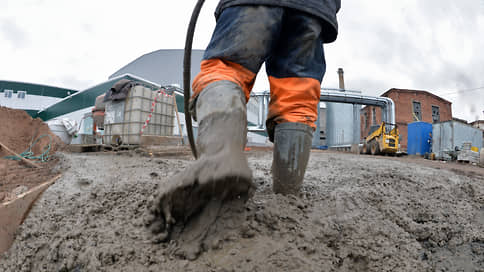The price of cement does not set
[ad_1]

Despite criticism from federal officials and representatives of the construction industry, cement producers have warned regulators of a 17-30% increase in production costs next year. The rise in costs is facilitated by increased costs for logistics, energy, higher prices for loans and the need to index staff salaries.
Kommersant has obtained letters from Soyuzcement (which unites large cement holdings) to the Ministry of Economy, the Ministry of Industry and Trade, the Ministry of Construction and the Federal Antimonopoly Service (FAS), where it is reported that in 2024 at individual plants the cost of production will increase by 17–30% per year by the year. The association asked departments to take this fact into account in their forecasts for next year. The Ministry of Economy confirmed to Kommersant the receipt of the letter, explaining that control over the cost of cement is not within its competence. The Ministry of Construction and the Ministry of Industry and Trade did not answer Kommersant’s questions. The FAS reported that the situation with cement prices remains under control of the agency and the service has already opened two antimonopoly cases against the structures of Vostokcement and Gazmetallproekt.
Soyuzcement reports that industrial inflation for the cement industry this year will exceed the forecast by 5-10 percentage points, reaching 23-30%.
According to Rosstat estimates, the average cost of purchasing cement year-on-year increased by 14.7%, reaching 7.9 thousand rubles in September. per ton. Soyuzcement explains this by a serious devaluation of the ruble exchange rate, which resulted in a 20% increase in the cost of some imported equipment, logistics difficulties associated with a shortage of drivers and the low rate of renewal of the carrier fleet. In addition, the personnel shortage forces manufacturers to annually raise salaries by 15%, the costs of servicing loans and leasing are growing following the key rate of the Central Bank, and energy tariffs are increasing.
In the first half of 2023, the cost of cement production increased by 18.3%, notes Vladimir Guz, managing partner of SMPRO. He says that the high key rate this year overlapped with the problems of previous years – monopoly tariffs. He explains that cement factories are heavily dependent on borrowed funds as many plants require modernization.
For this reason, industrial inflation for the cement industry in a number of regions next year will be 17–20%, predicts commercial director of Cementum Ekaterina Molodtsova. According to her, the industry is completely dependent on imported equipment from India, China, and Turkey.
Irek Faizullinhead of the Ministry of Construction, on the cost of building materials in August 2023:
“Of course, there will be some increase in price.”
The increase in the cost of building materials is a painful topic for developers. Deputy Prime Minister Marat Khusnullin, who oversees the construction industry, announced on November 4 the need to check the unreasonable rise in prices for cement and reinforcement. In turn, on November 7, the FAS reported a decrease in prices for reinforcement throughout the country by 7% since mid-October.
Cement and reinforcement are the main components of the frame of houses, and their rise in price has led to an increase of 10–15% in construction costs, says Elena Mironova, director of the estimated pricing department of the Granel Group of Companies. The developers themselves pointed to rising prices and problems with cement supplies this summer (see “Kommersant” dated June 20).
President of the Osnova Group of Companies Alexander Ruchiev expects that selling prices will continue to rise in the future. Soyuzcement, citing data from the Ministry of Industry and Trade, indicates that in 2022, the share of cement in the cost of construction and installation work was only 3.5%. Mr. Ruchev notes that the same growing costs for energy, transportation, personnel, and raising borrowed funds entail an increase in costs for all components of construction costs.
According to Soyuzcement, cement production in Russia in January-August increased by 2.5% year-on-year, to 42.6 million tons, consumption – by 5%, to 44.3 million tons. Due to good demand and high capacity utilization, Mr. Guz speaks of a gradual improvement in the financial condition of the cement industry and an increase in its investment attractiveness. But in order to maintain profitability at the current level and increase production, a business must take into account the increase in the cost of production and servicing obligations in its pricing policy for 2024, Ms. Molodtsova is sure.
[ad_2]
Source link





